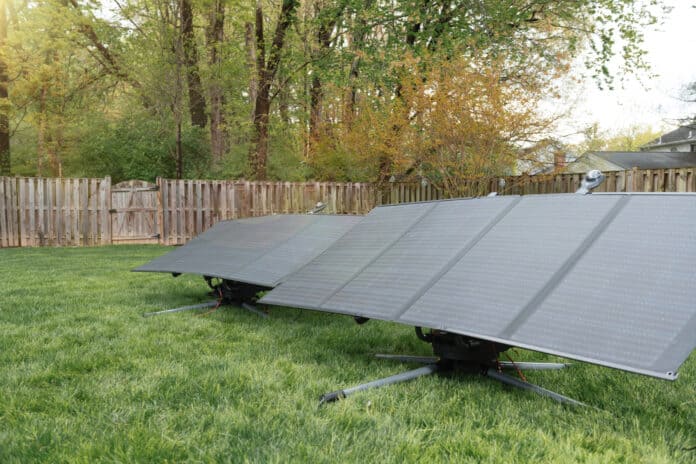When you purchase solar panels, they come with a rated power wattage, typically between 100W and 400W per panel. Rated power indicates the maximum amount of electricity a solar panel can capture under ideal conditions.
However, the rated power does not mean the panel will always generate that amount of electricity. Rated power matters when comparing different solar panels, but the actual output will vary depending on the amount of direct sunlight your panels receive, the temperature, efficiency, and other factors.
While rated power for solar panels is by no means an exact measure of how much electricity the panels can produce, it is still a crucial figure to consider when determining the right solar panels for your energy consumption requirements — and how many panels you need.
What Does Rated Power Mean?
In simple terms, rated power refers to how much electricity a solar panel can generate in optimal conditions. In other words, the solar panel would generate power at the levels the rating suggests in direct sunlight, at the perfect temperature, and positioned at an optimal angle.
For example, suppose you have a 400W rigid solar panel. The solar panel’s rated power indicates it would generate 400 watts of electricity in direct sunlight with no obstructions and in an ideal temperature.
However, perfect conditions rarely exist in the real world. Various factors mean that your 400W panel may create less than the maximum rated power at any given time. Rather than an expected output level, the rating represents the maximum your solar panel can generate.
In conjunction with information on the average number of peak hours of sunlight your location receives, the rated power can help you determine how many PV panels you need for your solar power system.
How the Rated Power Is Determined
The PV panel rating is determined based on Standard Test Conditions (STC). STC test conditions include artificial sunlight shining directly on the photovoltaic cells at 1000W per square meter, the equivalent of noon sunshine at 25 degrees Celsius. These are the optimal conditions for the panel to operate, applied at an indoor lab.
Manufacturers test the product in these conditions to determine a given PV panel’s rating. For example, the 110W portable solar panel from EcoFlow produces 110 watts in highly controlled STC lab conditions.
Sometimes, a solar panel approaches or even meets its rated power in actual use. Most of the time, though, the amount of electricity captured will be less than that under lab conditions.
The rating shows the peak performance available from a solar panel. The rated power doesn’t guarantee how much electricity a solar panel will generate under real-world conditions, but it serves as a good starting point.
How to Use Solar Panel-Rated Power Metrics
Of course, your solar panels will not be in a temperature-controlled, air-pressure-controlled, sunlight-controlled indoor lab.
Instead, you’ll set them up outside — preferably at the optimal orientation and angle — to receive as much direct sunlight as possible over the course of the day. A solar panel will usually produce less than its rated power due to environmental conditions.
Knowing the rated power before you purchase solar panels is essential, but you need to consider additional information. For example, it’s crucial to know how many hours of peak sunlight your solar panels will receive during the day on average.
From there, you can estimate the watts of electricity each panel can produce.
P (rated power in Watts) x H (peak sunlight hours) = Total energy output in Wh
Once you determine that figure and calculate your household electricity consumption, you can estimate how many solar panels you need,
It’s impossible to predict with certainty how much electricity your solar panels will generate on a day-to-day basis. Still, rated power gives you a valuable starting point and helps you determine the minimum number of solar panels required to generate the electricity you need.
Frequently Asked Questions
No. The rated power is the maximum wattage a solar panel can generate under optimal conditions in a laboratory setting. Conditions in the real world are rarely optimal. A solar panel typically produces less than its rated power in normal use and will never generate more.
Conclusion
Unless you live in a controlled laboratory, your solar panels won’t generate their full rated power all or even most of the time. Still, rated power is instrumental when combined with environmental data to determine the total energy production of a solar array. EcoFlow’s solar panels have some of the highest efficiency ratings in the industry, ensuring you maximize electricity production no matter how many hours of peak sunlight your location receives.
